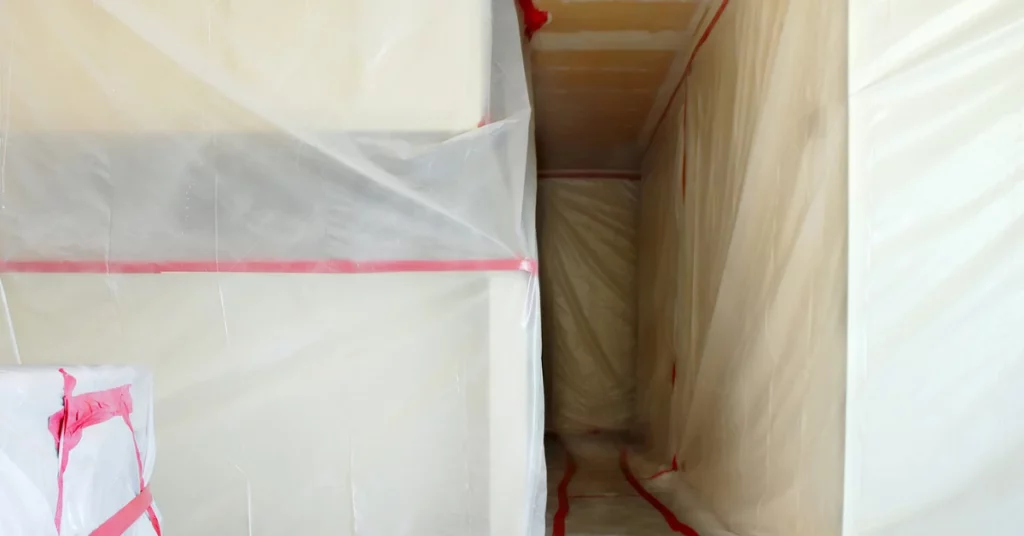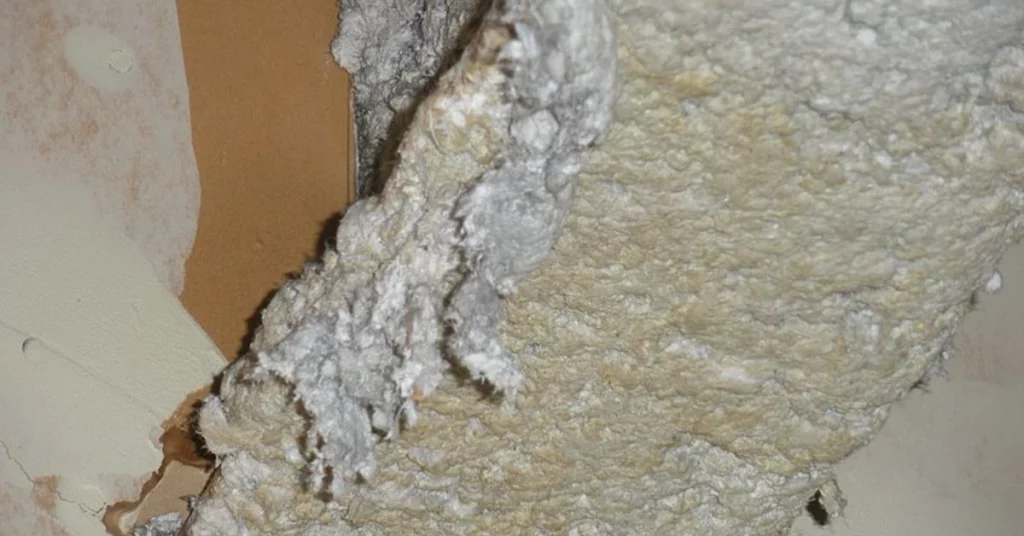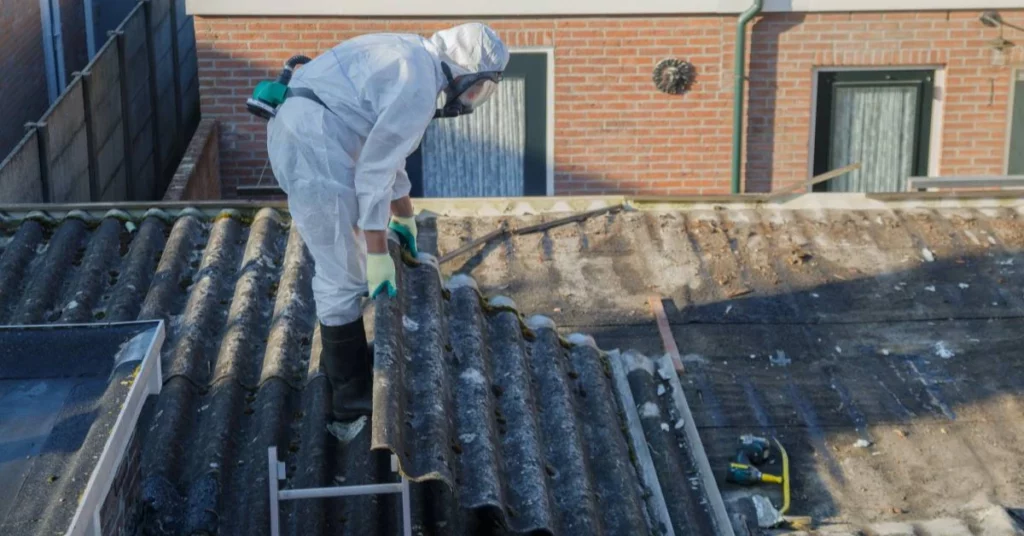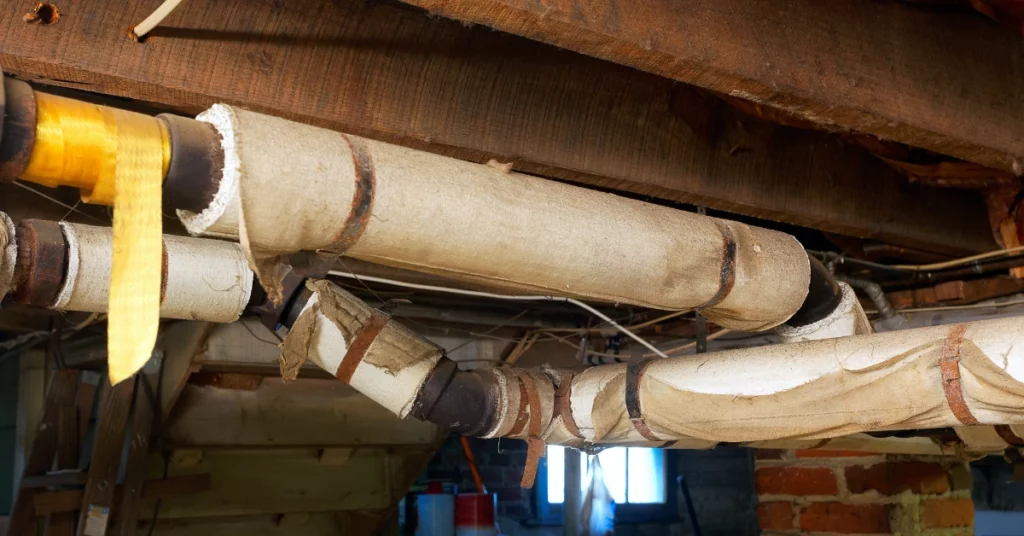Asbestos is a naturally occurring mineral that has been widely used in construction and other industries due to its resistance to heat and fire. However, it poses significant health risks, including lung cancer, mesothelioma, and asbestosis, when its fibers are inhaled.
Asbestos regulations in Florida protect public health and ensure safe practices in construction, renovation, and demolition. This article provides a comprehensive overview of these regulations, starting from federal guidelines and narrowing down to specific Florida laws.
What are the Federal Regulations on Asbestos in the United States?
Federal regulations on asbestos are primarily governed by a set of laws designed to mitigate the health risks associated with asbestos exposure. These regulations establish strict standards for asbestos use, handling, and abatement.
1. Clean Air Act (CAA):
The CAA, through the National Emission Standards for Hazardous Air Pollutants (NESHAP), regulates asbestos emissions during demolition and renovation activities. It mandates specific work practices to prevent asbestos from becoming airborne.
2. Toxic Substances Control Act (TSCA):
Under TSCA, the EPA is empowered to regulate the manufacture, import, processing, and distribution of asbestos-containing materials. The act includes specific provisions for managing asbestos risks.
3. Asbestos Hazard Emergency Response Act (AHERA):
AHERA requires schools to inspect their buildings for asbestos-containing materials and prepare management plans to address any asbestos found. It also sets guidelines for asbestos training and accreditation programs.
Table 1: Summary of Key Federal Asbestos Regulations
| Law | Year Enacted | Regulating Agency | Scope |
| Clean Air Act | 1970 | EPA | Controls asbestos emissions during demolition |
| TSCA | 1976 | EPA | Regulates asbestos production and use |
| AHERA | 1986 | EPA | Mandates asbestos management in schools |
Which Federal Agencies Regulate Asbestos in the United States?
The EPA and OSHA are the primary federal agencies responsible for asbestos regulation in the United States. Each agency has distinct roles in ensuring that asbestos is managed safely.
- Environmental Protection Agency (EPA):
The EPA oversees asbestos regulations primarily through the Clean Air Act, TSCA, and AHERA. The agency is responsible for setting standards, conducting inspections, and enforcing compliance. The EPA reports that it conducts approximately 20,000 inspections annually to ensure compliance with asbestos regulations.
- Occupational Safety and Health Administration (OSHA):
OSHA regulates asbestos exposure in the workplace. This includes setting permissible exposure limits (PELs), requiring protective equipment, and mandating asbestos training programs for workers. OSHA’s enforcement efforts led to over $1.5 million in fines related to asbestos violations in 2022.
Table 2: Comparison of EPA and OSHA Roles in Asbestos Regulation
| Agency | Primary Role | Key Responsibilities |
| EPA | Regulates asbestos in the environment and public buildings | Sets standards, conducts inspections, enforces laws |
| OSHA | Regulates asbestos in the workplace | Sets PELs, mandates worker training, enforces safety standards |
How Do the Environmental Protection Agency (EPA) and Occupational Safety and Health Administration (OSHA) Enforce Asbestos Regulations?
The EPA and OSHA enforce asbestos regulations through a series of compliance mechanisms designed to protect public health and safety.
- EPA Enforcement:
The EPA enforces asbestos regulations by conducting inspections of sites where asbestos is present or suspected, such as schools, industrial sites, and demolition areas. When violations are found, the EPA can issue fines, require corrective actions, or take legal action. In 2020, the EPA fined a contractor $150,000 for improper asbestos removal at a renovation site in Texas, demonstrating the agency’s commitment to strict enforcement.
- OSHA Enforcement:
OSHA enforces workplace asbestos regulations by inspecting job sites, especially in industries where asbestos exposure is likely, such as construction and manufacturing. OSHA can issue citations and fines for violations, such as failing to provide proper protective equipment or not conducting adequate asbestos training. A notable example includes a $200,000 fine issued to a construction company in Florida for multiple asbestos-related violations on a project site.
Table 3: EPA and OSHA Enforcement Actions
| Agency | Common Enforcement Actions | Example Case |
| EPA | Inspections, fines, legal actions | $150,000 fine for improper asbestos removal (2020) |
| OSHA | Inspections, citations, fines | $200,000 fine for workplace asbestos violations (construction) |
How Does the EPA Regulate Asbestos?
The EPA regulates asbestos through a combination of laws and guidelines aimed at reducing asbestos exposure and ensuring safe handling practices.
- Standards and Guidelines:
The EPA sets specific standards for how asbestos must be handled, removed, and disposed of. These standards are detailed in the Clean Air Act and TSCA regulations. For example, under NESHAP, the EPA mandates that all asbestos-containing materials must be properly wetted before removal to prevent fibers from becoming airborne. According to EPA data, wetted asbestos removal reduces airborne asbestos fiber concentrations by over 90%, significantly lowering health risks.
- Recent Updates:
In recent years, the EPA has updated its asbestos regulations to include stricter controls on asbestos-containing materials that were previously exempt. This includes a 2019 rule under TSCA that requires companies to obtain EPA approval before manufacturing or processing certain asbestos-containing products, ensuring that new uses of asbestos are carefully controlled.
Table 4: Key EPA Asbestos Regulations and Guidelines
| Regulation/Guideline | Description |
| NESHAP (under CAA) | Requires wetting of asbestos materials during removal to prevent emissions |
| TSCA Asbestos Rule | Mandates EPA approval for new uses of asbestos-containing materials |
How Does OSHA Regulate Asbestos in the Workplace?
OSHA regulates asbestos exposure in the workplace to protect workers from the health risks associated with asbestos fibers through:
- Permissible Exposure Limits (PELs):
OSHA sets PELs for asbestos in the workplace, limiting the amount of asbestos fibers that workers can be exposed to during an 8-hour workday. The current PEL is 0.1 fibers per cubic centimeter of air (f/cc), a standard that has been shown to reduce the risk of asbestos-related diseases by over 50% compared to higher exposure levels.
- Worker Training and Protective Equipment:
OSHA requires employers to provide asbestos training to workers who may be exposed to asbestos. This includes training on safe handling practices, the use of personal protective equipment (PPE), and emergency procedures in case of asbestos exposure. According to OSHA, proper training and PPE use can reduce workplace asbestos exposure by up to 85%.
- Inspections and Penalties:
OSHA regularly inspects workplaces for asbestos compliance. Employers who fail to meet OSHA standards can face significant fines and penalties. In 2022, OSHA conducted over 1,200 inspections related to asbestos compliance, resulting in substantial penalties for non-compliant businesses.
Table 5: OSHA Asbestos Workplace Regulations
| Regulation | Requirement |
| PELs | Limit asbestos exposure to 0.1 f/cc over an 8-hour shift |
| Worker Training | Mandatory training on asbestos handling and safety |
| Personal Protective Equipment (PPE) | Employers must provide and enforce the use of PPE |
If you’re dealing with an asbestos issue in your home or business, it’s important to comply with both federal and state regulations. Contact us today to ensure your asbestos problem is handled safely and legally. Visit our contact page for more information.
What are the Federal Laws Related to Asbestos (e.g., Clean Air Act, Toxic Substances Control Act)?
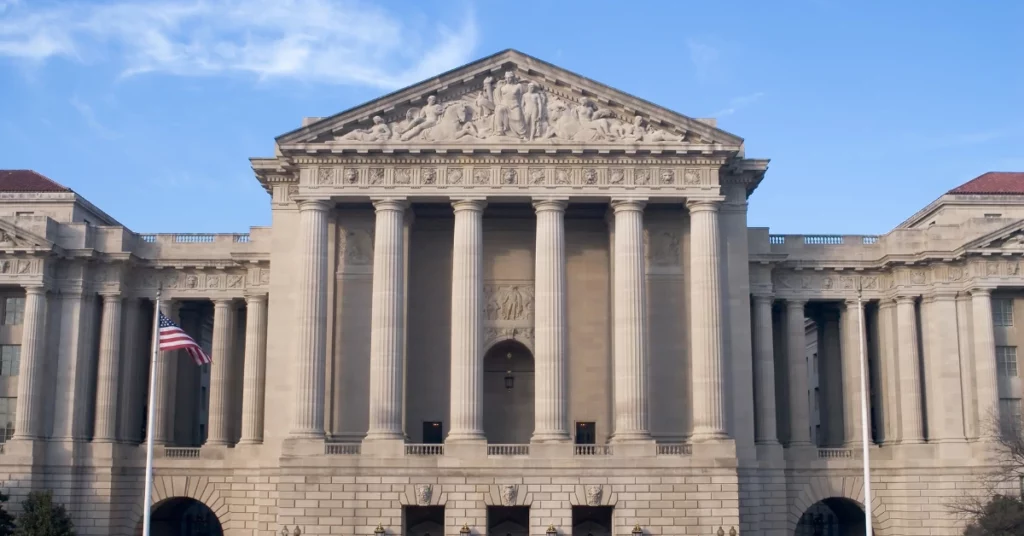
The federal laws that govern asbestos to protect public health and regulate its use, handling, and abatement across the United States are:
1. Clean Air Act (CAA):
This law is pivotal in regulating asbestos emissions during demolition, renovation, and waste disposal. Under the National Emission Standards for Hazardous Air Pollutants (NESHAP), specific procedures must be followed to prevent asbestos fibers from becoming airborne.
2. Toxic Substances Control Act (TSCA):
TSCA gives the EPA the authority to regulate the manufacture, import, processing, and distribution of asbestos-containing materials. The 2019 rule under TSCA introduced stricter controls and required companies to obtain EPA approval before using certain asbestos-containing products.
3. Asbestos Hazard Emergency Response Act (AHERA):
AHERA mandates that schools inspect for asbestos-containing materials and develop management plans to mitigate any risks. This act also requires schools to ensure that asbestos is managed safely, particularly in older buildings.
Table 6: Overview of Federal Laws Related to Asbestos
| Law | Year Enacted | Primary Focus | Key Provisions |
| Clean Air Act | 1970 | Air quality and asbestos emissions | NESHAP regulations for asbestos during demolition/renovation |
| TSCA | 1976 | Toxic substance regulation, including asbestos | EPA approval required for asbestos product use |
| AHERA | 1986 | Asbestos management in schools | Inspection and management of asbestos in school buildings |
Understanding these federal laws is very important for anyone dealing with asbestos. If you need help navigating these regulations, visit our contact page for expert assistance.
What is the Toxic Substances Control Act (TSCA)?
The Toxic Substances Control Act (TSCA) is a comprehensive law that empowers the EPA to regulate the manufacture, use, and disposal of toxic substances, including asbestos.
- EPA’s Role Under TSCA: The EPA is responsible for ensuring that asbestos is managed safely under TSCA. This includes banning certain asbestos-containing products and requiring strict controls for others. For example, the EPA’s 2019 rule under TSCA significantly tightened restrictions on asbestos, requiring companies to seek EPA approval before using certain asbestos products.
- Impact on Asbestos Regulation: TSCA has had a profound impact on how asbestos is regulated in the United States. It has led to the phase-out of many asbestos-containing products and has set the stage for future regulations that could further limit or eliminate asbestos use.
Table 7: Key Elements of the Toxic Substances Control Act (TSCA)
| Provision | Description |
| Product Bans and Restrictions | Bans certain asbestos-containing materials and restricts others |
| EPA Approval for New Uses | Requires companies to obtain EPA approval before using asbestos |
| Ongoing Risk Evaluations | Mandates continuous assessment of asbestos-related risks |
For businesses dealing with asbestos, compliance with TSCA is non-negotiable. Contact us today for expert guidance on adhering to these regulations. Visit our contact page.
What is the Asbestos Hazard Emergency Response Act (AHERA) in Asbestos Regulation?
The Asbestos Hazard Emergency Response Act (AHERA) is a crucial federal law specifically targeting asbestos in schools and public buildings.
- Requirements Under AHERA: AHERA mandates that all public and non-profit private schools must inspect for asbestos-containing materials, develop and maintain an asbestos management plan, and conduct regular surveillance and re-inspections. This act also requires schools to inform parents, teachers, and employee organizations about the presence and condition of asbestos in the school.
- Compliance and Enforcement: Schools found to be non-compliant with AHERA can face significant penalties. The EPA actively enforces AHERA, and in 2018 alone, over 1,200 schools were inspected for compliance, resulting in numerous corrective actions and fines.
Table 8: AHERA Compliance Requirements
| Requirement | Description |
| Inspection and Management Plan | Schools must inspect and manage asbestos materials |
| Regular Surveillance | Ongoing monitoring and re-inspections are required |
| Notification Requirements | Schools must notify relevant parties about asbestos presence and condition |
If you manage a school or public building, complying with AHERA is essential. Ensure you meet all requirements by contacting us for a consultation. Visit our contact page.
What is the Clean Air Act in Asbestos Regulation?
The Clean Air Act (CAA) plays a pivotal role in regulating asbestos emissions to protect air quality and public health.
- NESHAP Standards:
Under the Clean Air Act, the National Emission Standards for Hazardous Air Pollutants (NESHAP) includes strict guidelines for the handling and disposal of asbestos during demolition and renovation activities. These standards are designed to prevent asbestos fibers from becoming airborne, which poses a significant health risk.
- Impact of the CAA:
The CAA has been instrumental in reducing airborne asbestos levels. According to the EPA, NESHAP regulations have reduced asbestos emissions by more than 90% during demolition and renovation projects.
Table 9: Key NESHAP Requirements Under the Clean Air Act
| Requirement | Description |
| Proper Handling of Asbestos | Asbestos materials must be wetted during removal to prevent fibers from becoming airborne |
| Notification of Demolition/Renovation | Contractors must notify the EPA before beginning any project involving asbestos |
| Disposal of Asbestos Waste | Asbestos waste must be properly sealed and transported to designated landfills |
Adhering to NESHAP standards is vital for any construction or renovation project involving asbestos. Contact us to ensure your project is fully compliant. Visit our contact page for more details.
How Are Asbestos Abatement Projects Regulated Federally?
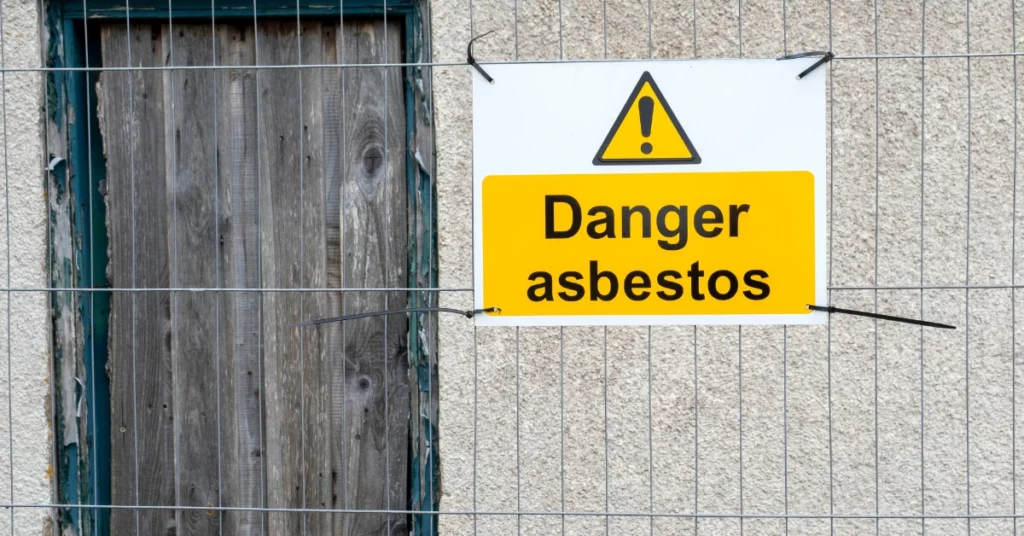
Asbestos abatement projects are strictly regulated at the federal level to ensure the safe removal, handling, and disposal of asbestos-containing materials.
- Regulatory Framework:
The EPA and OSHA both set stringent guidelines that must be followed during asbestos abatement. These include requirements for worksite preparation, worker protection, air monitoring, and waste disposal. The goal is to minimize the release of asbestos fibers into the air and protect both workers and the public.
- Compliance Standards:
Abatement projects must comply with NESHAP under the Clean Air Act and OSHA’s workplace safety standards. Failure to adhere to these regulations can result in severe penalties. For example, non-compliance with NESHAP during abatement can lead to fines of up to $25,000 per day.
Table 10: Federal Regulations Governing Asbestos Abatement
| Regulation | Key Requirement |
| NESHAP (Clean Air Act) | Proper handling and disposal of asbestos, notification of demolition/renovation |
| OSHA Standards | Worker protection, exposure limits, mandatory training |
| TSCA Guidelines | EPA approval for the use of certain asbestos-containing products |
If you’re planning an asbestos abatement project, it’s important to comply with all federal regulations. Get in touch with us for expert guidance on safe and legal asbestos removal. Visit our contact page to learn more.
What Are the Penalties for Violating Federal Asbestos Regulations?
Violating federal asbestos regulations can lead to significant penalties, including hefty fines and legal consequences, depending on the severity of the violation.
- EPA Penalties:
Under the Clean Air Act (CAA), penalties for non-compliance with asbestos regulations can reach up to $25,000 per day for each violation. This can include improper removal, handling, or disposal of asbestos-containing materials. For example, in 2021, a construction company was fined $350,000 for failing to comply with NESHAP requirements during a demolition project.
- OSHA Penalties:
OSHA can impose fines of up to $14,502 per violation for asbestos-related safety breaches, such as failing to provide proper protective equipment or training for workers. Repeat or willful violations can result in penalties exceeding $145,027 per violation. In one case, a company was fined $1.3 million for multiple asbestos-related violations, including exposing workers to dangerous levels of asbestos.
Table 11: Federal Penalties for Asbestos Regulation Violations
| Regulating Body | Violation Type | Penalty Amount |
| EPA | Non-compliance with CAA (NESHAP) | Up to $25,000 per day per violation |
| OSHA | Standard violations (e.g., lack of PPE, training) | Up to $14,502 per violation; up to $145,027 for willful/repeat violations |
Don’t risk these severe penalties. Ensure your asbestos handling and abatement projects comply with all federal regulations. Contact us today for professional assistance. Visit our contact page.
Are Sellers Legally Required to Disclose the Presence of Asbestos During Real Estate Transactions?
Yes, sellers are legally required to disclose the presence of asbestos during real estate transactions if they are aware of it. This is critical to ensure that potential buyers are informed about any asbestos-related risks associated with the property.
- Legal Requirements:
Federal law mandates that sellers disclose any known asbestos hazards in residential properties built before 1978. This is part of the broader requirement under the Residential Lead-Based Paint Hazard Reduction Act, which includes asbestos disclosures for certain properties.
- Impact on Transactions:
Failure to disclose known asbestos hazards can lead to legal disputes, fines, and even the nullification of a sale. Real estate transactions can be complicated by the presence of asbestos, as buyers may require asbestos inspection and abatement before completing the purchase.
Table 12: Asbestos Disclosure Requirements in Real Estate
| Requirement | Description |
| Seller Disclosure | Sellers must disclose known asbestos in homes built before 1978 |
| Potential Legal Consequences | Non-disclosure can result in fines, lawsuits, or sale cancellation |
If you’re selling a property, make sure you comply with asbestos disclosure laws to avoid legal complications. Contact us for an asbestos inspection or consultation. Visit our contact page.
How Does Asbestos Disclosure Affect Property Sales and Leasing?
Asbestos disclosure can significantly impact property sales and leasing, potentially affecting the property’s value and marketability.
- Impact on Property Value:
Properties with known asbestos issues may see a reduction in value due to the costs associated with abatement and the perceived risk by potential buyers. According to real estate data, homes requiring asbestos abatement can sell for 10% to 20% less than comparable properties without asbestos issues.
- Buyer Considerations:
Buyers are often hesitant to purchase properties with asbestos, especially if significant abatement work is needed. This can lead to extended time on the market or require sellers to offer concessions, such as covering the cost of abatement.
- Leasing Implications:
For commercial properties, asbestos disclosure can affect leasing agreements. Tenants may request abatements before occupying the space or negotiate lower rent due to the potential health risks associated with asbestos.
Table 13: Effects of Asbestos on Property Transactions
| Factor | Potential Impact |
| Property Value | Decrease by 10% to 20% due to abatement costs and perceived risks |
| Buyer Hesitation | Increased market time, potential need for seller concessions |
| Leasing Terms | Tenants may request abatement or negotiate lower rent |
If asbestos is affecting your property sale or lease, we can help with inspection, disclosure, and abatement services. Visit our contact page to learn more.
What Requirements Does Florida Have on Asbestos Removal and Handling?
Florida has specific regulations governing the removal and handling of asbestos, designed to protect both workers and the public from exposure.
- State-Specific Regulations:
Florida follows federal guidelines for asbestos removal but also imposes additional state requirements. These include obtaining a notification permit from the Florida Department of Environmental Protection (DEP) before beginning any asbestos removal project that involves more than 160 square feet of asbestos-containing material.
- Contractor Requirements:
Only licensed asbestos contractors are permitted to perform asbestos removal in Florida. These contractors must adhere to strict guidelines regarding the containment, removal, and disposal of asbestos materials.
- Waste Disposal:
Asbestos waste must be transported to a designated landfill that accepts asbestos-containing materials. Failure to comply with Florida’s asbestos disposal regulations can result in significant fines and penalties.
Table 14: Florida Asbestos Removal Regulations
| Requirement | Description |
| Notification Permit | Must be obtained from Florida DEP for projects over 160 sq. ft. |
| Licensed Contractors | Only licensed contractors can perform asbestos removal |
| Waste Disposal | Asbestos waste must be transported to designated landfills |
If you need to remove asbestos in Florida, it’s essential to comply with state regulations. Contact us for professional asbestos removal services. Visit our contact page.
How Does Florida’s Department of Environmental Protection Enforce Asbestos Regulations?
The Florida Department of Environmental Protection (DEP) enforces regulations through:
- Inspection and Monitoring:
- The DEP conducts inspections of asbestos removal projects to ensure compliance with state and federal regulations. These inspections include reviewing work practices, checking permits, and verifying that asbestos waste is properly disposed of.
- Penalties for Non-Compliance:
- Violations of Florida’s asbestos regulations can result in significant penalties. These can include fines of up to $10,000 per violation per day, and in severe cases, criminal charges can be filed against the responsible parties.
- Enforcement Actions:
- The DEP actively pursues enforcement actions against contractors and property owners who fail to comply with asbestos regulations. Real-world examples of enforcement actions include fines imposed on contractors for improper asbestos removal and disposal practices.
Table 15: Florida DEP Enforcement of Asbestos Regulations
| Enforcement Action | Description |
| Inspections | DEP regularly inspects asbestos projects to ensure compliance |
| Penalties | Fines up to $10,000 per violation per day for non-compliance |
| Recent Case | DEP has issued significant fines for improper asbestos handling |
To avoid hefty fines and legal issues, ensure your asbestos project is compliant with Florida DEP regulations. Contact us for expert guidance. Visit our contact page to learn more.
What Are the Penalties for Violating Asbestos Regulations in Florida?
Violating asbestos regulations in Florida can lead to severe penalties, including substantial fines and potential legal action.
- Fines and Penalties:
The Florida Department of Environmental Protection (DEP) can impose fines of up to $10,000 per day per violation for non-compliance with state asbestos regulations. These fines apply to various infractions, including improper removal, handling, and disposal of asbestos-containing materials.
- Legal Consequences:
In addition to fines, violators may face legal action, including criminal charges, depending on the severity of the violation. In cases of willful neglect or repeated offenses, contractors and property owners could be subject to more severe penalties, including potential imprisonment.
- Enforcement Examples:
While specific case studies may not always be publicly detailed, the DEP has a history of pursuing aggressive enforcement actions against those who violate asbestos regulations. For example, contractors who fail to adhere to proper asbestos removal protocols have been fined and, in some cases, had their licenses revoked.
Table 16: Penalties for Asbestos Regulation Violations in Florida
| Violation Type | Potential Penalty |
| Improper Removal | Fines up to $10,000 per day per violation |
| Improper Disposal | Fines and potential criminal charges |
| Non-compliance with DEP Rules | Legal action, including fines and license revocation |
Avoid these costly penalties by ensuring your asbestos removal projects comply with Florida regulations. Contact us for expert advice and services. Visit our contact page.
Why is it Important to Hire Certified Asbestos Removal Professionals?
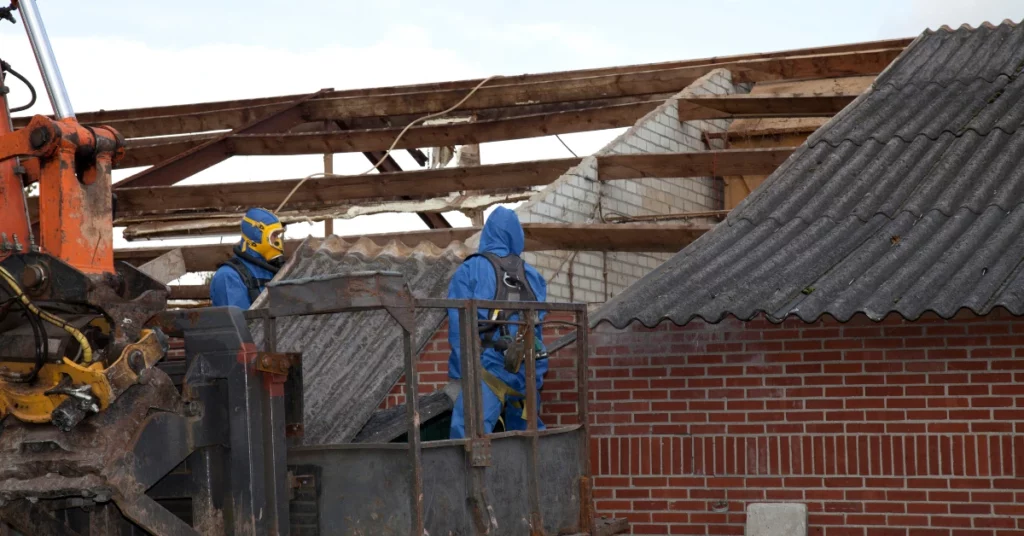
Hiring certified asbestos removal professionals is important to ensure the safe and legal handling of asbestos, protecting both public health and property owners from significant risks.
- Safety and Health Risks
Asbestos exposure is a major health hazard, leading to serious diseases like lung cancer, mesothelioma, and asbestosis. Certified professionals are trained to manage these risks by using proper safety protocols, equipment, and techniques to prevent asbestos fibers from becoming airborne.
- Compliance with Regulations:
Certified asbestos removal contractors are knowledgeable about federal and state regulations. They ensure that all removal, handling, and disposal processes comply with the stringent requirements set by the EPA, OSHA, and Florida DEP.
- Avoiding Legal Issues:
Using unlicensed or uncertified contractors can result in improper removal practices, leading to regulatory violations, fines, and legal action. Certified professionals help property owners avoid these issues by performing work that meets all legal standards.
Table 17: Benefits of Hiring Certified Asbestos Removal Professionals
| Benefit | Description |
| Health and Safety | Certified professionals follow protocols that minimize health risks |
| Regulatory Compliance | Ensures adherence to federal and state asbestos regulations |
| Legal Protection | Reduces the risk of fines, legal action, and liability |
Don’t take chances with asbestos removal. Hire certified professionals to protect your health and comply with the law. Contact us today for expert asbestos removal services. Visit our contact page.
What Permits Are Required for Asbestos Removal in Florida?
Asbestos removal in Florida requires specific permits that ensure that the work is conducted safely and in compliance with state regulations.
- Notification Requirements:
Before starting any asbestos removal project, contractors must notify the Florida Department of Environmental Protection (DEP). This notification must be submitted at least 10 business days before the start of the project, particularly for larger projects involving more than 160 square feet or 260 linear feet of asbestos-containing material.
- Permit Application:
The notification acts as a permit application, and it must include detailed information about the project, such as the location, type and quantity of asbestos being removed, and the methods that will be used for removal and disposal.
- Additional Local Permits:
Depending on the location, additional local permits may be required, especially in municipalities with stricter environmental regulations. Contractors must check with local authorities to ensure all necessary permits are obtained.
Table 18: Required Permits and Notifications for Asbestos Removal in Florida
| Requirement | Description |
| DEP Notification | Submit 10 business days before starting projects over 160 sq. ft./260 linear ft. |
| Permit Application Details | Include project scope, asbestos type, and removal methods |
| Local Permits | Check with local authorities for any additional permit requirements |
Ensure your asbestos removal project has all the necessary permits. Contact us to handle the permitting process and ensure compliance with Florida regulations. Visit our contact page for more details.
What Are the Licensing and Certification Requirements for Asbestos Work in Florida?
The licenses and certifications required for Asbestos work in Florida are:
- Asbestos Contractor License:
To legally perform asbestos abatement, contractors must obtain an Asbestos Contractor License from the DBPR. The licensing process requires contractors to meet specific qualifications, including:
1. Education and Experience:
Applicants must demonstrate a combination of education and experience in asbestos abatement. Typically, this includes at least three years of experience in the field, with documented work on significant asbestos projects.
2. State Examination:
Contractors must pass a state-administered exam that tests knowledge of asbestos laws, safety practices, and abatement techniques.
3. Liability Insurance:
Licensed contractors are required to carry liability insurance to cover potential damages or health risks associated with asbestos removal.
- Worker Certification:
Individuals who work under licensed contractors must also be certified to handle asbestos. Certification requirements include:
1. EPA-Approved Training:
Workers must complete a training program approved by the Environmental Protection Agency (EPA) or the state of Florida. The training covers the safe handling of asbestos, proper use of protective equipment, and understanding of regulatory compliance.
2. Regular Recertification:
Asbestos workers must renew their certifications regularly, typically every year, to stay up-to-date with the latest safety practices and regulatory changes.
- Continuing Education: Both contractors and workers are required to participate in ongoing education to maintain their licenses and certifications. This ensures that all individuals involved in asbestos work are knowledgeable about the most current laws, safety protocols, and industry standards.
Table 19: Licensing and Certification Requirements for Asbestos Work in Florida
| Requirement | Description |
| Asbestos Contractor License | Required by the DBPR; includes education, experience, and passing a state exam |
| Worker Certification | Mandatory EPA-approved training and regular recertification |
| Continuing Education | Ongoing training to maintain licensing and certification |
Ensure your asbestos removal project is handled by licensed and certified professionals. Contact us to verify contractor credentials and ensure compliance with Florida regulations. Visit our contact page for more information.
